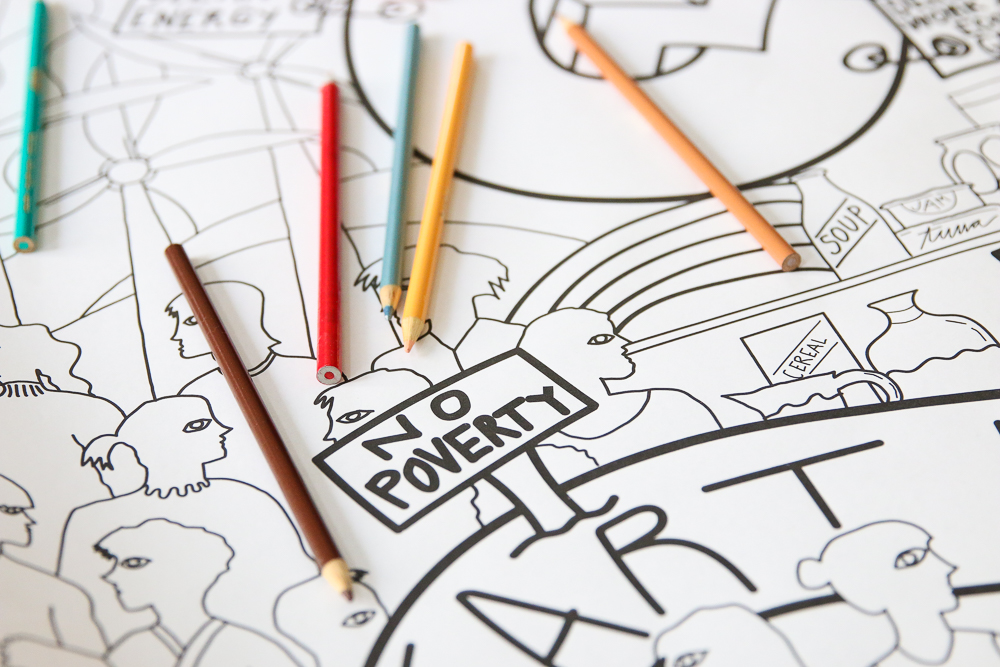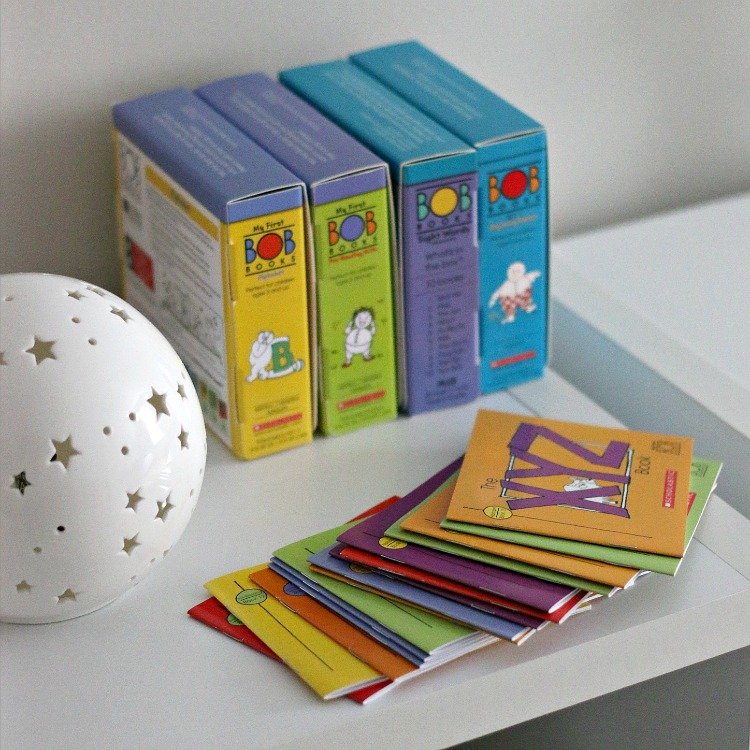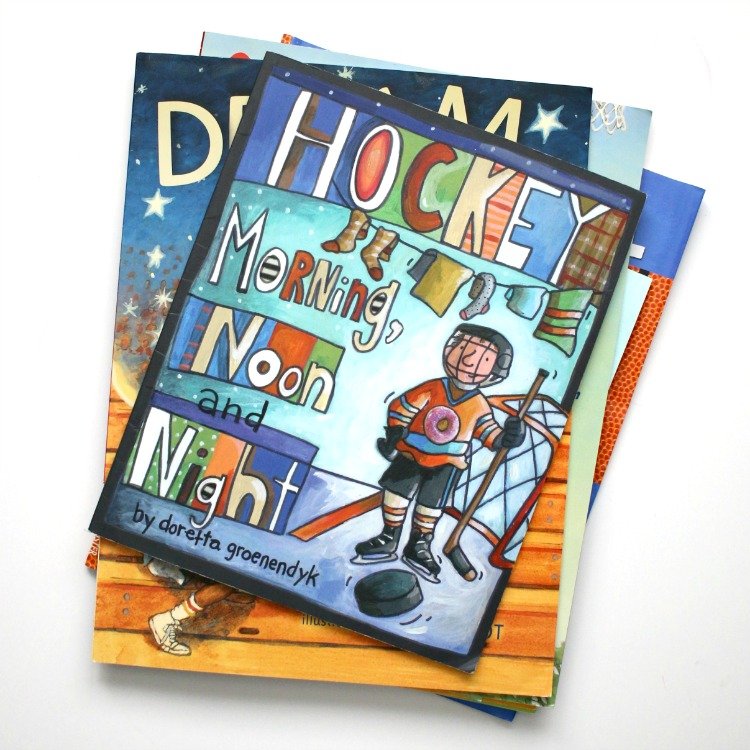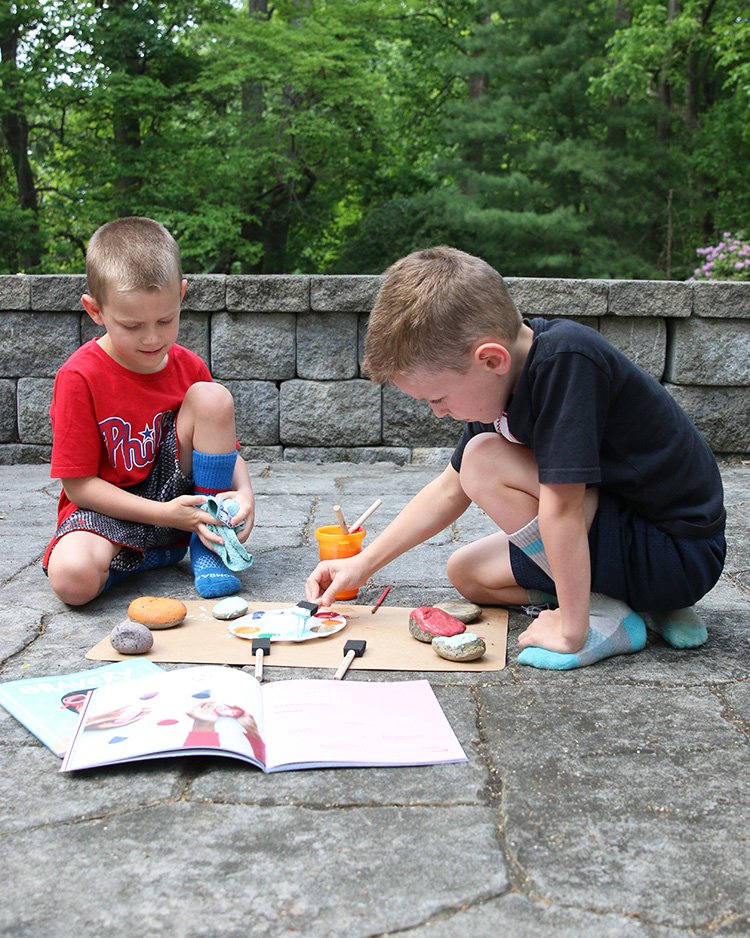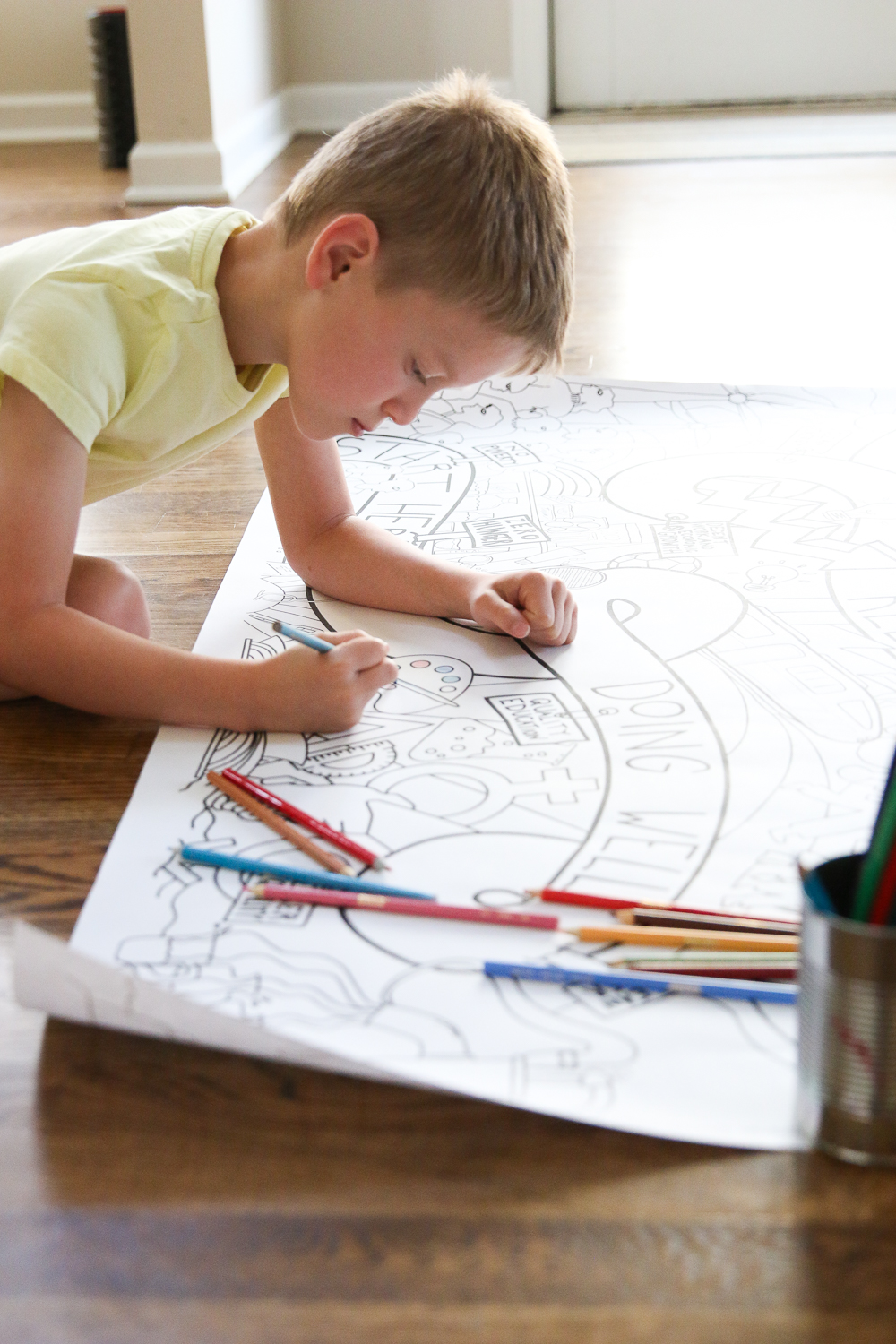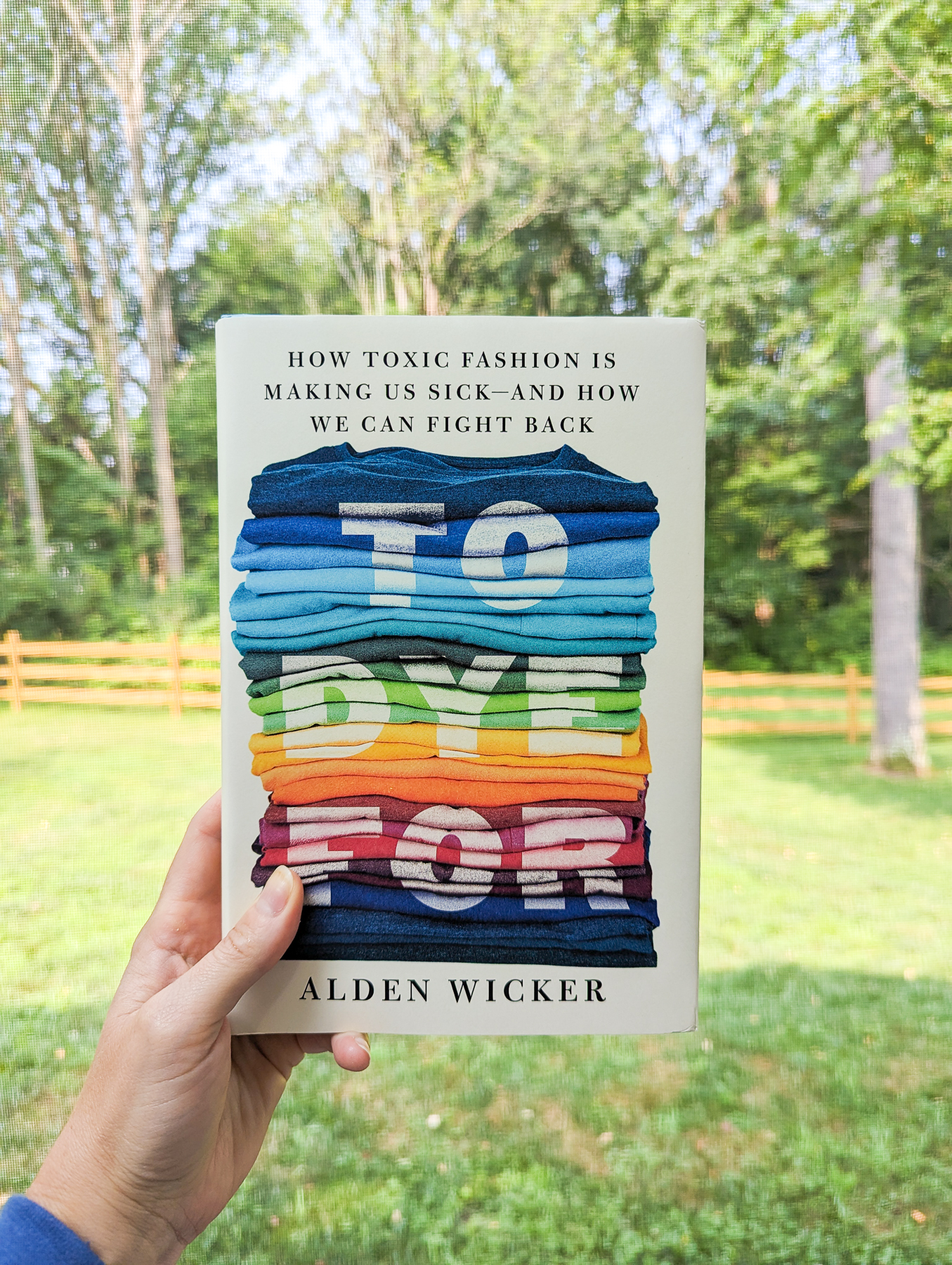No Poverty | Picture Book List For United Nations Sustainable Development Goal #1
Picture books are a great entry point to many difficult conversations with our kids. Read on for more about this creative project to help kids connect with and understand the global social and environmental justice goals as defined by the United Nations Sustainable Development Goals in an age-appropriate way.
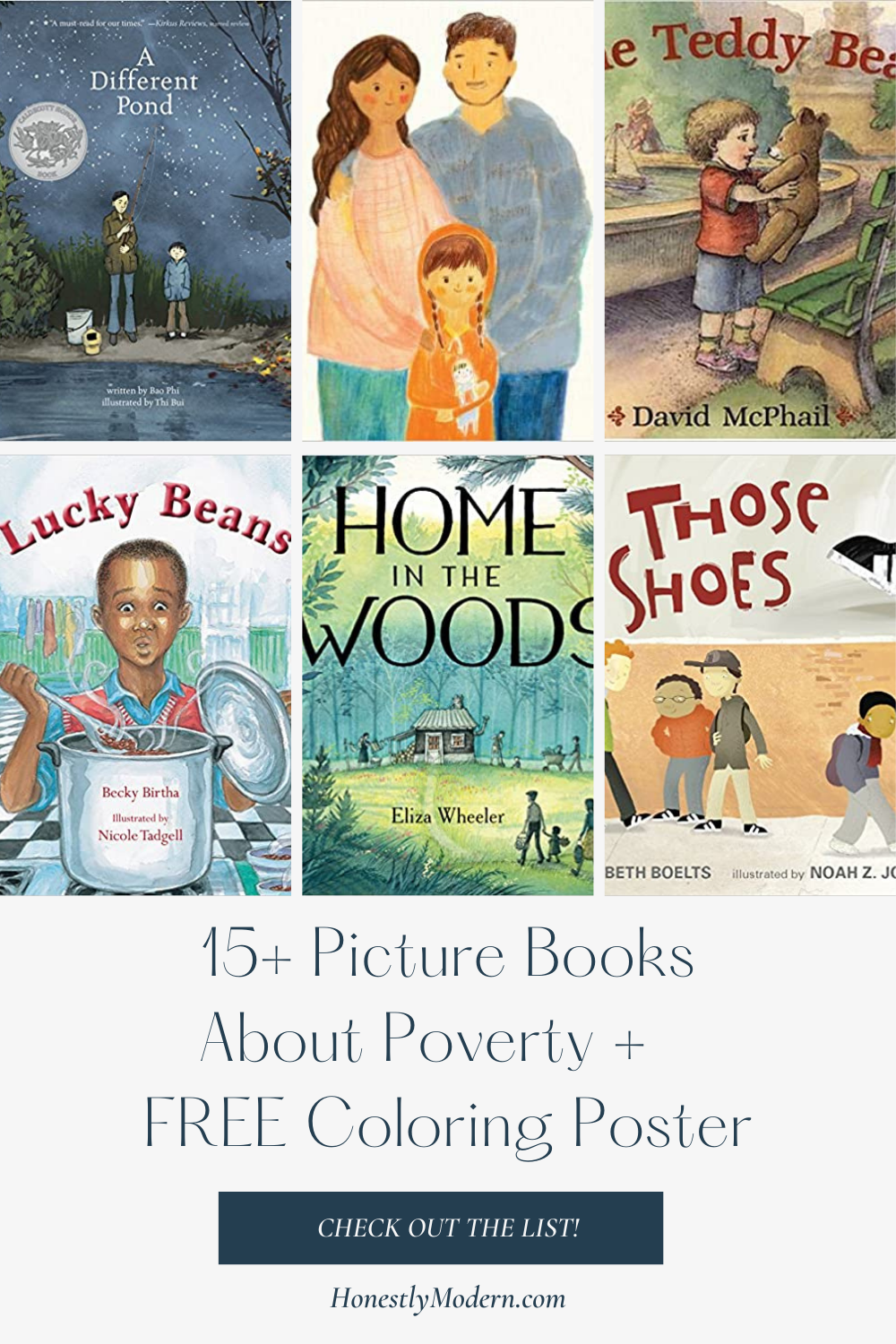
This picture book list is part of a series of picture book lists that align with the United Nations Sustainable Development Goals. We’ve created a picture book list for each of the 17 United Nations Sustainable Development Goals as well as a FREE coloring poster to track progress and explore the United Nations Sustainable Development Goals with kids.
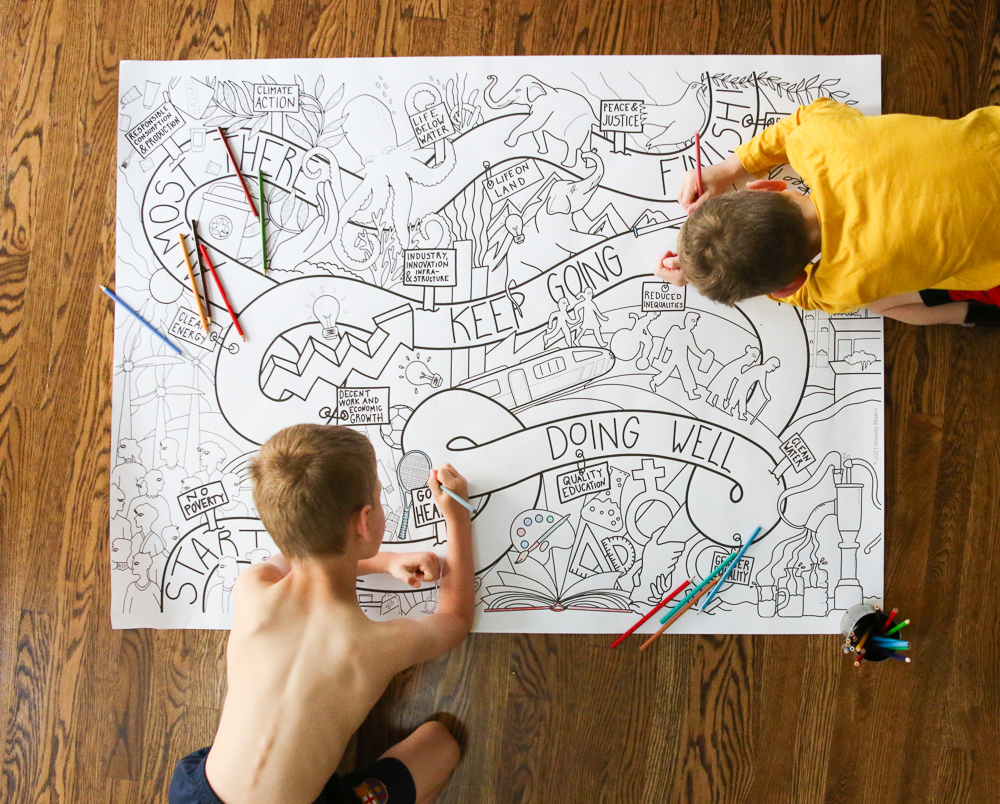
Learn More & Download The Free Coloring Poster
To learn more about the FREE coloring poster and see all 17 picture book lists, head to the United Nations Sustainable Development Goals Coloring Poster and Picture Book List homepage. Alternatively, simply sign up for our email list below and receive a link to download the FREE coloring poster.
What Are The United Nations Sustainable Development Goals?
In 2015, the United Nations adopted 17 Sustainable Development Goals (SDGs), a collective framework for peace and prosperity for people and the planet, now and into the future. The Sustainable Development Goals have broad intentions to end poverty and other deprivations while recognizing the need to simultaneously improve health and education, reduce inequality, spur economic growth, and tackle climate change.
No Poverty | United Nations Sustainable Development Goal #1
The first of the United Nations’ goals is to eliminate poverty by 2030. This is an ambitious one and the singular goal that is the ultimate aim of the remaining 16 SDGs. In 2015, when the goals were established, more than 700 million people, or 10 percent of the world population, lived In extreme poverty, struggling to fulfill the most basic need like health, education, and access to water and sanitation, to name a few.
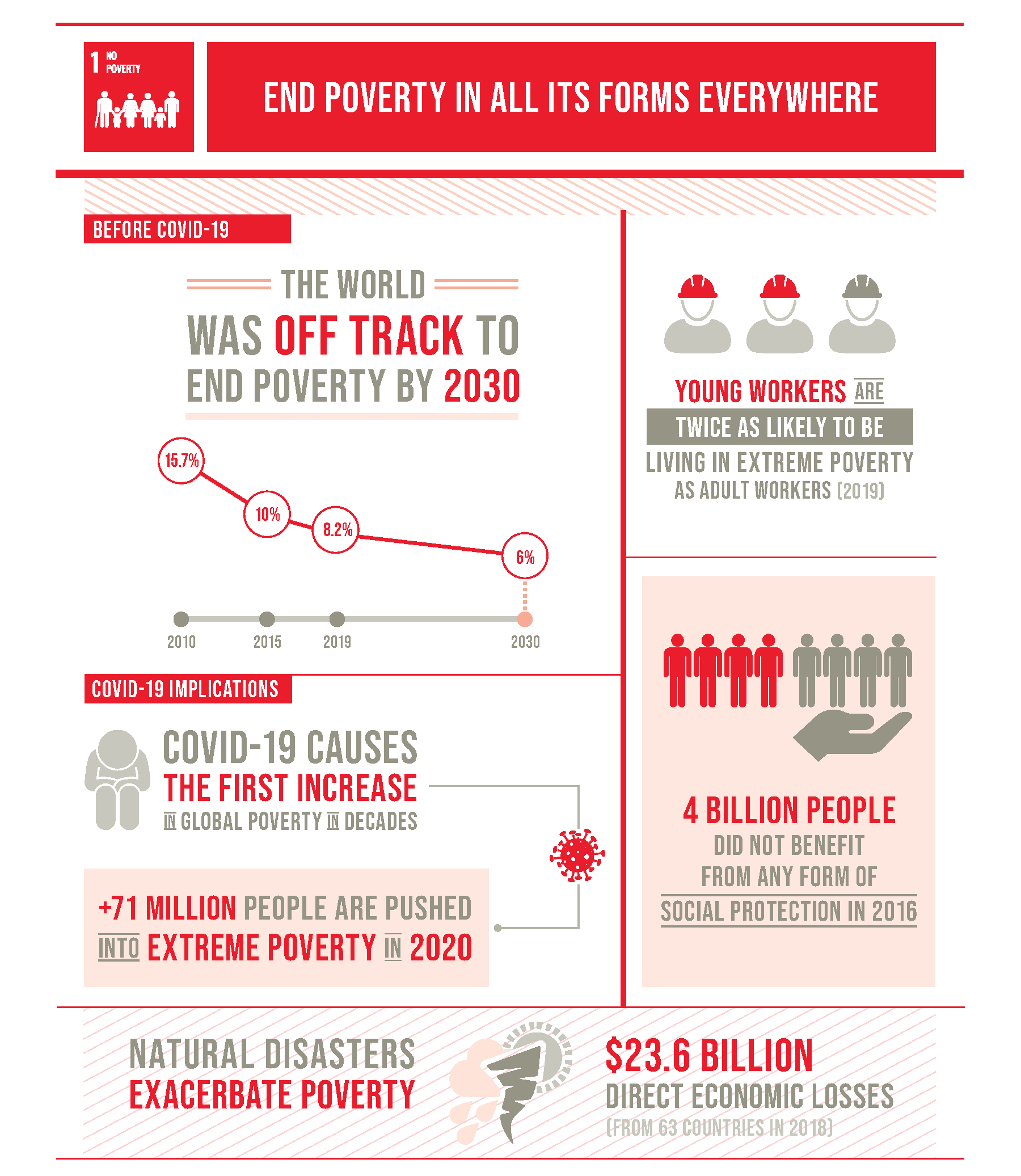
A Note on Buying and Borrowing Books
We include affiliate links to books we recommend. If you purchase through one of these links, Honestly Modern earns a very small commission that has no impact on your purchase price.
If you can find the books from your local library, from a friend, at an independent bookstore, or through a used book shop, those sources are ideal. Using the library is zero waste, saves money, and saves space in your home because you can read all the books without storing all the books on your bookshelves. If you’re not sure of the best way to use your local library, check out these tips to make the most of your local library. With a little exposure, your kids will learn to LOVE the library!
If you prefer to listen to audiobooks, we recommend using Libro.fm, our favorite audiobook app. We’ve tried several audiobook apps and love that Libro.fm supports independent bookstores and offers a great user experience.
Picture Books About Poverty
The following list of picture books discusses poverty and related matters from a variety of angles. Through fiction and non-fiction, readers can experience the world through the eyes of those struggling to make ends meet from day to day. Readers also witness families full of love and joy in spite of their circumstances, children showing compassion for those in poverty, and snippets of the struggles one faces without resources to access basic needs.
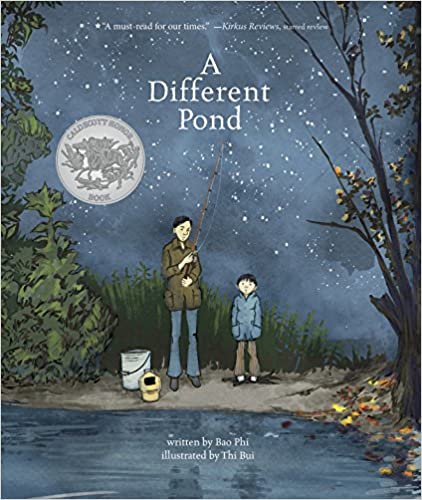
A Different Pond by Bao Phi
As a young boy, Bao Phi awoke early, hours before his father’s long workday began, to fish on the shores of a small pond in Minneapolis. Bao and his father fished for food, not recreation, as they did not have enough money to buy food from the grocery store regularly. A successful catch meant they could share a nice family dinner. Between hope-filled casts, Bao’s father told him about a different pond in their homeland of Vietnam.
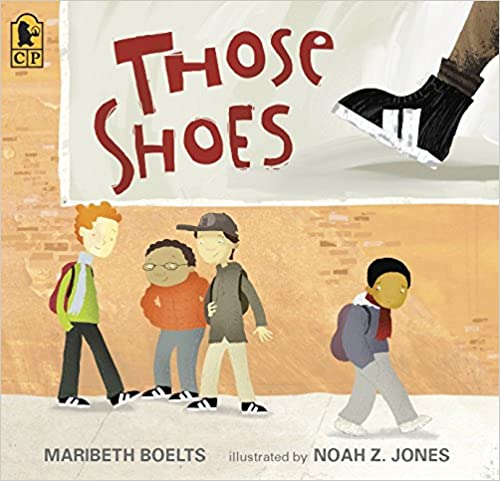
Those Shoes by Maribeth Boelts
My boys ask me to read this book to them all the time! The story intertwines one boy’s desire to have the new “cool shoes” with the importance of giving, even when you don’t have much to give.
Without being overt, the story includes characters of various ethnic backgrounds and socioeconomic levels and touches on the power of generosity with respect to building relationships as well as the fact that many people do not have enough money to buy all the things they want (and sometimes even the things they need).
This is such a good book all around and definitely one of our favorites. The boys liked it so much I bought it (something I don’t often do because we typically rely just on library books).
Ages 5 – 8 | Pages 40
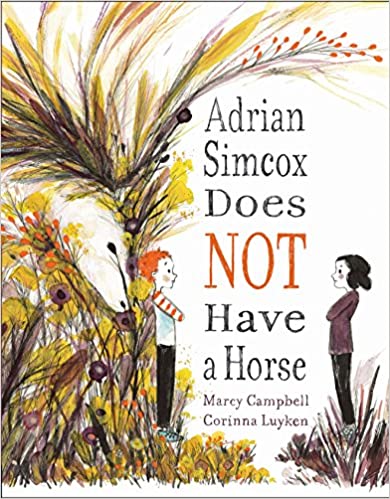
Adrian Simcox Does Not Have a Horse by Marcy Campbell
A little boy tells all his classmates that he has a horse at home. One of his classmates is sure he’s lying, particularly because she thinks he is poor and could never afford a horse. His house and yard are way too small, and his family doesn’t have enough money for a horse. She is upset that Adrian keeps lying, despite her mother’s attempts to encourage her not to worry about it. She ends up going to Adrian’s house and realizing that people are more than their money or their possessions.
Ages 3 – 5 | Pages 40
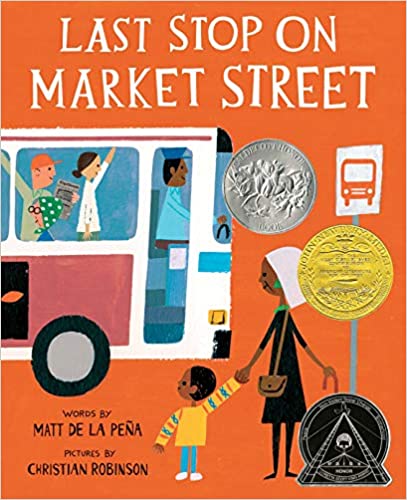
Last Stop on Market Street by Matt de la Peña
At the end of the school day, CJ joins his grandmother on a bus ride to another part of town. Throughout the ride, he takes notice and asks his grandmother about the stark differences between the areas through which they ride. His grandmother offers kind responses to his inquiries and helps him appreciate the differences between the more and less affluent parts of town.
Ages 3 – 5 | Pages 32
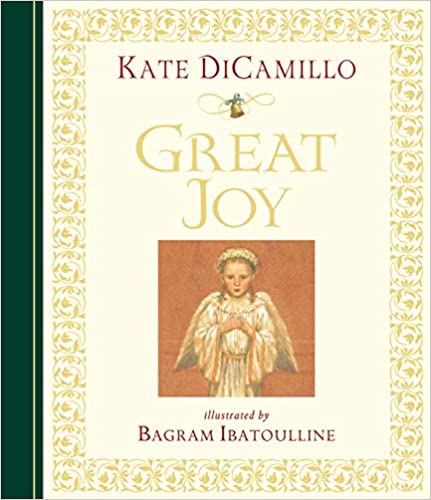
Great Joy by Kate DiCamillo
A young girl notices an old man and his pet monkey who play music on the corner near her house. She asks her mom where the man and the monkey go at night. Despite her mom discouraging her from worrying about the two, she stays up late one night to check at midnight if the man and the monkey are still on the corner she sees from her window.
She learns they have nowhere to go and so they sleep outside at night. Although her mother says she cannot invite them into their house, she invites them to the Christmas pageant in which she is performing.
This is a sweet book that reminds all of us to care about others in our community no matter their status or circumstances. The book does have some references to Christmas so it may not be a favorite for all families who either don’t celebrate the holiday or prefer to read Christmas-themed books only during the holiday season.
Ages 4 – 8 | Pages 32
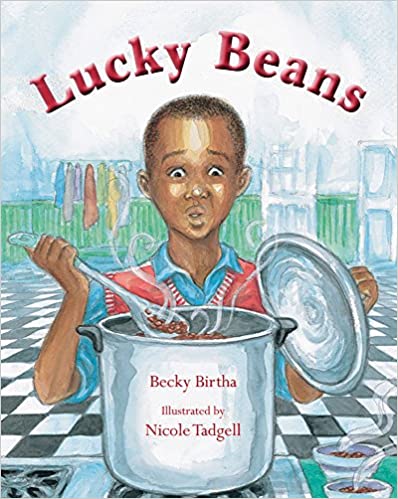
Lucky Beans by Becky Birtha
A little boy and his family have beans for dinner every night because they can’t afford anything else. As he walks to school one day, he sees a sewing machine as a contest prize in a store window. He knew his mother wanted a new sewing machine but they could not afford it. However, this sewing machine would be gifted to the person who could guess how many beans were in a large jar in the store window.
The boy and his family had lots of beans at their house and a large jar which could help them make a good guess! He thought they had a good shot at winning. I’ll let you read the story to find out what happens, but rest assured it has a happy ending.
Ages 4 – 8 | Pages 32
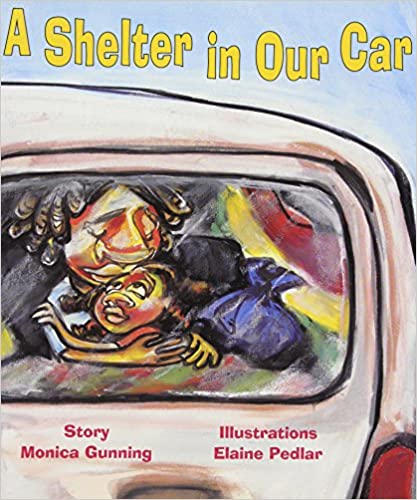
A Shelter In Our Car by Monica Gunning
A little girl and her mother are forced to live in their car after her father dies and her mother can’t find work. This book addresses the challenges of cleaning up in a park bathroom, not having enough to eat, being picked on by classmates for being poor, and feeling lost without a place to call home.
Although it’s written in words children can understand, it also addresses some hard topics. I think this is a great introduction to the realities of being homeless as a family but should probably be reserved for children who are developmentally ready to handle the circumstances.
Ages 6 – 9 | Pages 32
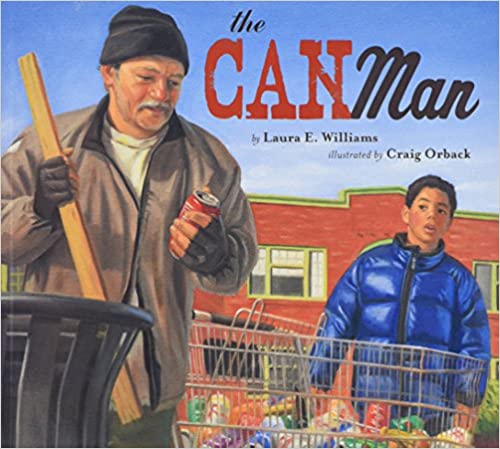
The Can Man by Laura E. Williams
A homeless man who lost his job now walks around the neighborhood collecting cans to buy food and clothes. A little boy in the neighborhood knows about this and decides to collect cans to make money to buy a new skateboard. Unfortunately, the little boy collects all the cans so the homeless man, The Can Man, finds no cans to earn money for his food.
In the end, the little boy realizes that his skateboard is less important than the homeless man’s needs, and he gives the man the money from the cans he collected. I like that this story highlights a positive relationship between two very different members of a community that often don’t interact.
Ages 6 – 9 | Pages 40
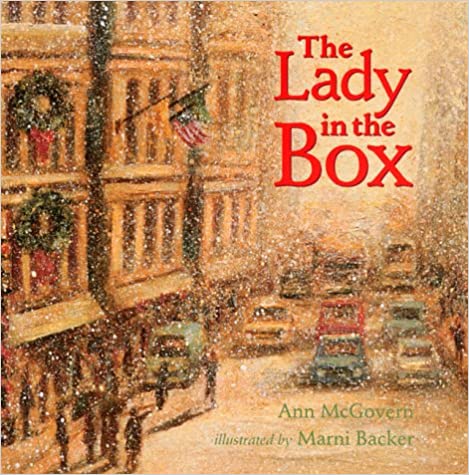
The Lady in the Box by Ann McGovern
Two young children notice a lady who lives in the streets even during the cold winter weather. They begin to bring her food and snacks as well as a scarf to stay warm. Eventually, they convince a shop owner to let her stay near his warm basement. This story candidly addresses the issue of homelessness and shows how children can show compassion and advocate for the less fortunate members of their communities.
Ages 4 – 8 | Pages 40
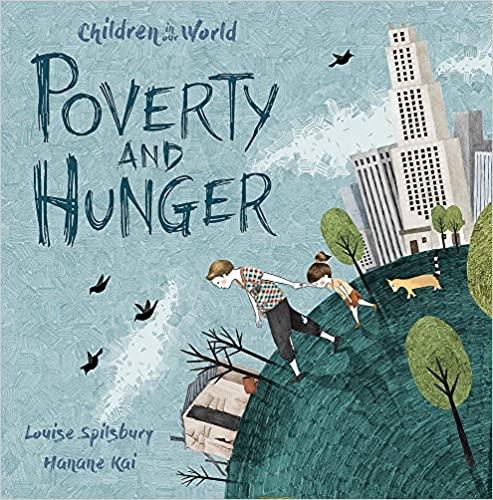
Poverty and Hunger (Children In Our World) by Louise Spilsbury
This a non-fiction book that discusses many reasons why families experience poverty and hunger as well as how it affects their lives. It further explains for children what services and institutions can help as well as how they can help individually. It is an honest book that might be better suited for older children who are ready to discuss and understand the realities of poverty and hunger.
Ages 6 – 10 | Pages 32
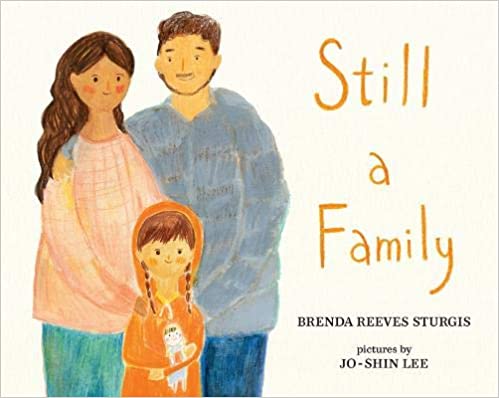
Still A Family: A Story About Homelessness by Brenda Reeves Sturgis
Despite losing their home and staying in separate shelters, a young girl tells her story about how she and her family are still a family even though they do not have their own home and don’t sleep in the same shelter each night. In spite of their circumstances, they still love each other and are optimistic that there will be a time in the future they will be living together again.
Ages 4 – 8 | Pages 32
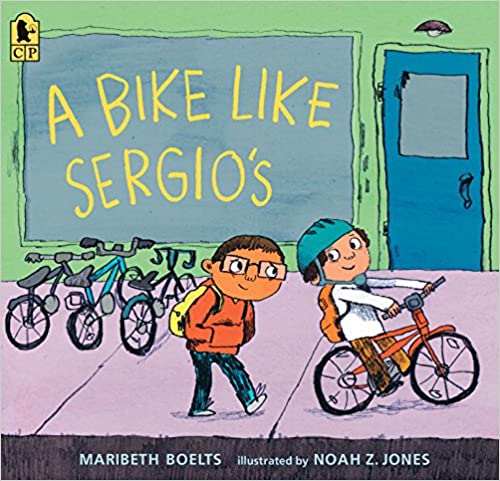
A Bike Like Sergio’s by Maribeth Boelts
A young boy, Sergio, longs to have a bicycle like his friend. His friend doesn’t understand why Sergio’s parents can’t simply buy the boy a bike for a birthday gift.
Sergio watches a woman drop a $100 bill on the ground and reflects on what to do with the money. While he would love to have it for his bike, he also knows that his family could really use the money for food and he should also return it to the woman (who he regularly sees at the store). The story offers several reflections on the realities of not having enough money to buy what one needs and wants.
Ages 5 – 8 | Pages 40
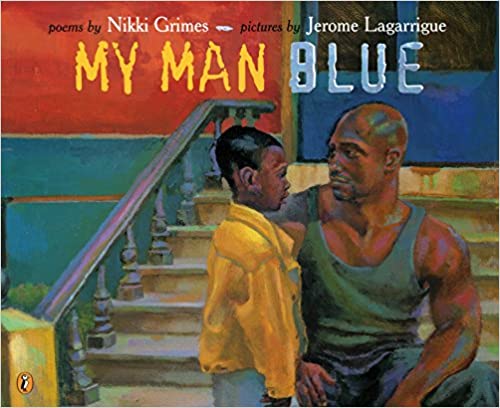
My Man Blue by Nikki Grimes
This book is an uplifting story about friendship set in an underprivileged community burdened by the dangers of street and gang life. Written in prose, the book is beautifully written and highlights strong relationships and the power they have between a young boy and an adult man in his neighborhood who seeks to ensure he grows up to have a good life.
Ages 4 – 8 | Pages 32
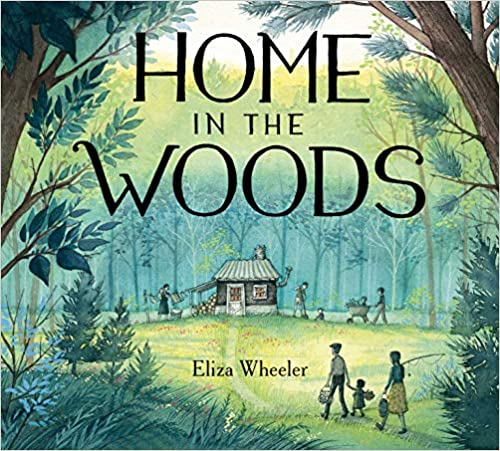
Home In The Woods by Eliza Wheeler
After a family of eight children loses their father, they move into a very small house in the middle of the woods with nearly nothing. Despite the lack of resources, they slowly turn the rundown house into a home and make the most of what they have. This story is based on the true story of the author’s grandmother and showcases a home filled with love despite being short on resources.
Ages 5 – 8 | Pages 40
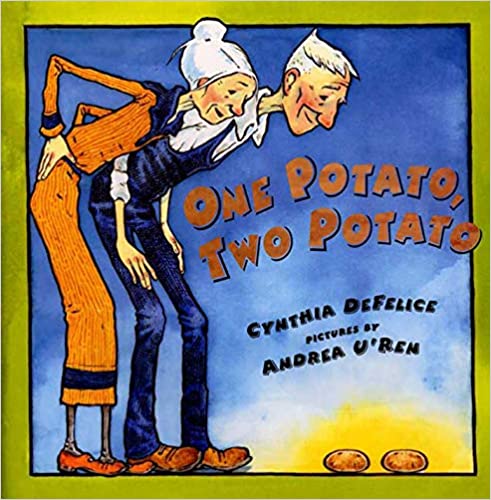
One Potato, Two Potato by Cynthia DeFelice
An old couple has very little money and they live off of just one potato each day. One day, they discover a magic pot that duplicates whatever falls into the pot. After making more potatoes to eat, candles to see, blankets to stay warm, and enough gold coins to meet their needs, they accidentally replicate themselves. Though the pot could duplicate anything, they decide they have plenty and return the pot to where they found it in hopes that someone else who needs it will benefit from its magic.
Ages 4 – 8 | Pages 32
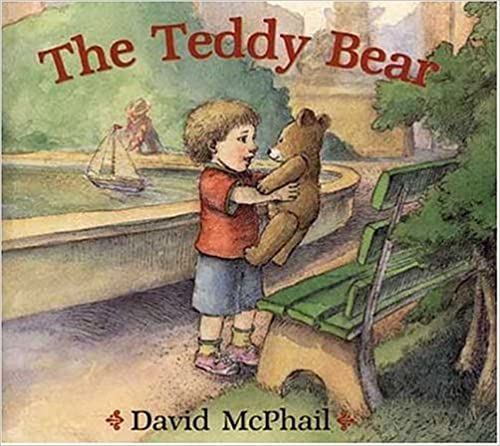
The Teddy Bear by David McPhail
A young boy has a beloved teddy bear that he leaves at a restaurant one day. It ends up in the trash and a homeless man finds it. The homeless man cherishes the bear and carries it everywhere with him.
One day, the boy finds his old bear on the bench and takes it while the homeless man is away from the bench for a moment. The homeless man returns and the boy gives the bear back to him, realizing he needs the bear more than the boy. This book gives children a chance to see compassion offered to everyone, no matter their circumstances.
Ages 3 – 6 | Pages 32
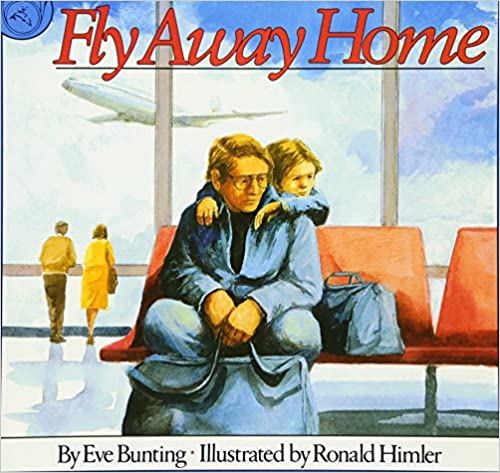
Fly Away Home by Eve Bunting
A young homeless boy tells the story of how he and his father live in the airport because they do not have a permanent home of their own. They use the bathroom at night and sleep sitting up so that security doesn’t notice them. This book was written long before security became much stricter at airports, but it still provides another example of how a homeless family makes their own home where they can.
Ages 4 – 7 | Pages 32
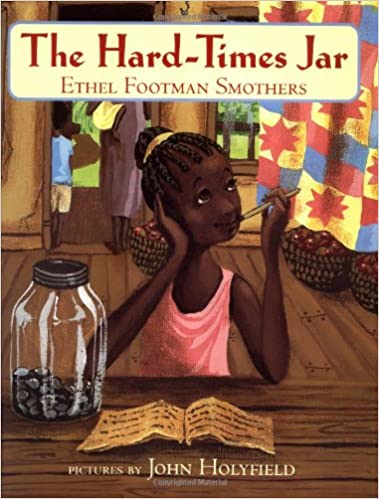
The Hard Times Jar by Ethel Footman Smothers
A young girl in a migrant family longs to read books of her own, but her family cannot afford anything beyond the basics. As the family travels, they save a bit of extra money in a jar for hard times. Sometimes she attends school, and other times while traveling, she works to help the family earn money. This book highlights how some families make do with very little while also highlighting the varying degrees to which children have access to good education
Ages 5 – 8 | Pages 32 .
Do you have any other books you like that help children understand poverty, have compassion for those struggling to make ends meet, or books that help children living in poverty see themselves reflected in stories in a positive light? I’d love to hear any more recommendations in the comments below.
And if you have not done so already, be sure to check out the other booklists aligned with the United Nations Sustainable Development Goals and print out the FREE Coloring Poster!
